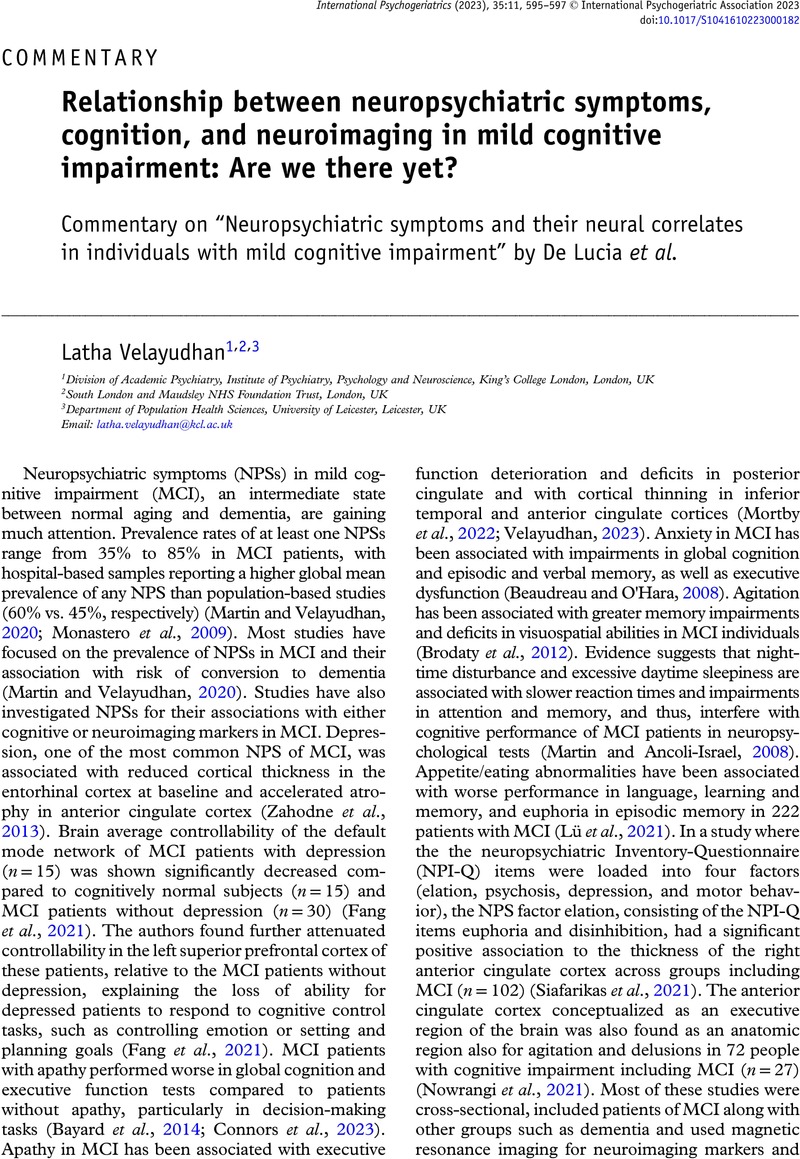Crossref Citations
This article has been cited by the following publications. This list is generated based on data provided by Crossref.
Primavera, Diego
Bert, Fabrizio
Romano, Ferdinando
La Torre, Giuseppe
Gonzalez, Cesar Ivan Aviles
Perra, Alessandra
Fragoso-Castilla, Pedro José
Guerra Muñoz, Martha Esther
Tramontano, Enzo
Machado, Sergio
Nardi, Antonio Egidio
Sancassiani, Federica
and
Carta, Mauro Giovanni
2024.
Cognitive Impairment and Risk of Depressive Episodes from a Bipolar Spectrum Perspective: A Case-Control Study in Older Adults during the COVID-19 Lockdown.
Psychiatry International,
Vol. 5,
Issue. 3,
p.
482.



